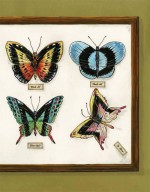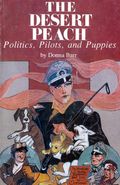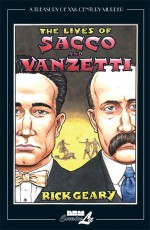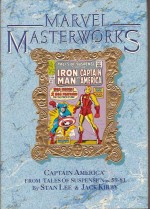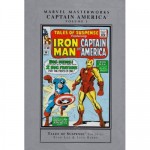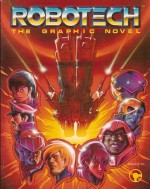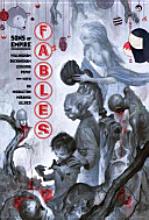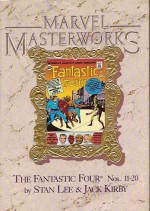
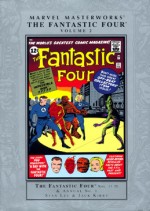
By Stan Lee, Jack Kirby, Dick Ayers, Steve Ditko & various (Marvel)
ISBN: 0-87135-481-0Â Â Second edition 978-0-7851-0980-8
After blasting into the comics-buying consciousness and swiftly garnering a devoted following in 1961 “the World’s Greatest Comic Magazine!†continued to live up to its boast in an astounding succession of boldly experimental, evocatively enthralling and amazingly human funny, thrilling and completely compelling sequential sagas.
This second deluxe hardcover compilation carries on reprinting those groundbreaking classics in lavish full-colour splendour, re-presenting Fantastic Four #11-20, originally released between February and November 1963, and almost unanimously the result of Stan Lee, Jack Kirby & Dick Ayers’ close and effective collaboration.
Actually I’m possibly rewriting history just a bit here. The innovations continued but didn’t always hit the mark, as tellingly described in Lee’s effusive introduction to this volume.
Issue #11 had two short stories instead of the usual book-length yarn; ‘The Impossible Man’ – a baddie-free yet compellingly light-hearted tale about a fun-seeking but obnoxiously omnipotent visitor from the stars and ‘A Visit with the Fantastic Four’, which offered background into the characters plus a behind-the-scenes travelogue of off-duty life with the team which mischievously reiterated the novel fact the heroes collected and read a comic book about themselves…
Fans hated the issue at the time but now these vignettes are considered some of the most effective tales of that formative period…
Fantastic Four #12 featured an early crossover experiment when the team were asked to help the US army capture ‘The Incredible Hulk’ (whose own short-lived title had recently been cancelled). This tense cold-war spy and sabotage thriller set the ground rules for many a two-fisted clash between the Jade Goliath and the blockbusting Thing…
This was followed by ‘Versus the Red Ghost and his Incredible Super Apes!’ another politically-charged, commie-baiting drama pitting Marvel’s First Family against a Soviet scientist in the space-race to the Moon: a tale notable not only for the supremely moody inking of Steve Ditko (replacing the adroit Ayers for one month) over Kirby’s astounding pencils but also for the introduction of the cosmic voyeurs called The Watchers and the discovery of the intoxicatingly intriguing lost city in the “Blue Area of the Moonâ€.
Issue #14 featured the return of ‘The Sub-Mariner and the Merciless Puppet Master!’ with the Atlantean Prince a hapless pawn of the mind-controlling doll-despot’s revenge plot, promptly followed by ‘The Mad Thinker and his Awesome Android!’ a chilling war of intellects with plenty of room for all-out action as a master-strategist manipulated the team into splitting up in order to steal all Reed Richards’ scientific secrets.
FF #16 revealed ‘The Micro-World of Doctor Doom!’ in a spectacular other-worldly rollercoaster action-romp guest-starring new hero Ant-Man, after which the incorrigible Iron-Clad villain promptly returned with infallible, deadly traps a month later when the quartet were almost ‘Defeated by Doctor Doom!’
A shape-changing super-alien with all their cosmically induced powers was next to menace our heroes when ‘A Skrull Walks Among Us!’ and issue #19 introduced another of the company’s top-ranking super-villains when the FF became ‘Prisoners of the Pharaoh!’ whilst exploring ancient Egypt seeking a cure for the blind sculptress Alicia Masters. This time travel tale has been revisited by so many writers that it is considered one of the key-stone stories of Marvel continuity.
Fantastic Four #20 concludes this compendium with a terrifying new foe, as the compulsorily aloof Watcher broke his eternal vow of neutrality to warn the heroes of a potential threat to all Existence before standing back and letting them do all the hard work by defeating ‘The Mysterious Molecule Man!’
Also included in this tantalising tome is a splendid Thing pin-up and a brace of pseudo-scientific Fantastic Four Feature Pages by Lee, Kirby & Ayers telling all you need to know about the powers of the Human Torch.
Although possibly – just, perhaps – a little dated in tone, these are undoubtedly graphic classics of comic story-telling illustrated by one of the world’s greatest talents just approaching his mature peak: fast, frantic fun and a joy to read or re-read. This comprehensive, joyous introduction (or even reintroduction) to these characters is a wonderful reminder of just how good comic books can – and should – be.
© 1963, 1964, 1988, 2003 Marvel Characters, Inc. All rights reserved.


